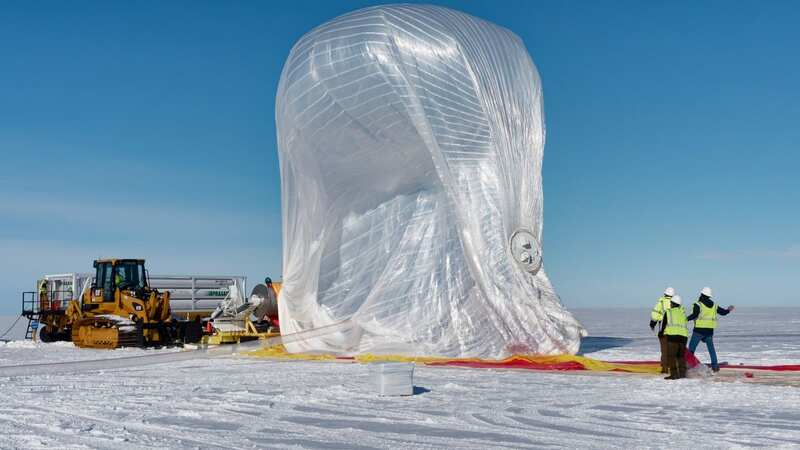NASA's stadium-sized balloon breaks record after 57 days in the sky
A space agency's latest hi-tech record breaker is - a huge balloon.
NASA's GUSTO (Galactic/Extragalactic ULDB Spectroscopic Terahertz Observatory) scientific balloon has achieved the longest flight of any NASA heavy-lift, long-duration scientific balloon mission at 57 days, 7 hours, 38 minutes. The current mission, which ended Monday (26 Feb), is to map a large part of the Milky Way galaxy, including the galactic centre, and the nearby Large Magellanic Cloud.
NASA Wallops said: "The payload descended by parachute landing safely on the ground in Antarctica." The "stadium-sized" 39 million cubic-foot, zero-pressure scientific balloon and observatory reaches altitudes above 125,000 feet. The gondola and instruments carried by the balloon have an approximate mass of 2,000 kg (4,400 lb) and measure about 6 m wide by 6 m height.
GUSTO was launched on December 31 from the Long Duration Balloon Camp near the U.S. National Science Foundation's McMurdo Station in Antarctica. Andrew Hamilton, acting chief of NASA's Balloon Program Office at the agency's Wallops Flight Facility in Virginia, said: "The success of this balloon mission is a fantastic tribute to all the people that support the program."
"The balloon and balloon systems have been performing beautifully, and we're seeing no degradation in the performance of the balloon. The winds in the stratosphere have been very favourable and have provided stable conditions for extended flight."
 Green comet last seen by Neanderthals 50,000 years ago to fly past earth tonight
Green comet last seen by Neanderthals 50,000 years ago to fly past earth tonight
The GUSTO astrophysics mission is managed by NASA's Explorers Program Office at the agency's Goddard Space Flight Center in Greenbelt, Maryland, and led by principal investigator Christopher Walker from the University of Arizona, with support from the Johns Hopkins University Applied Physics Laboratory.
Mr Walker said: "NASA's Long Duration Balloon program provides researchers the ability to fly state-of-the art payloads at the very edge of space, affording them the opportunity to make groundbreaking observations of the cosmos more frequently and at a significantly lower cost than conventional orbital missions."
Read more similar news:
Comments:
comments powered by Disqus


































